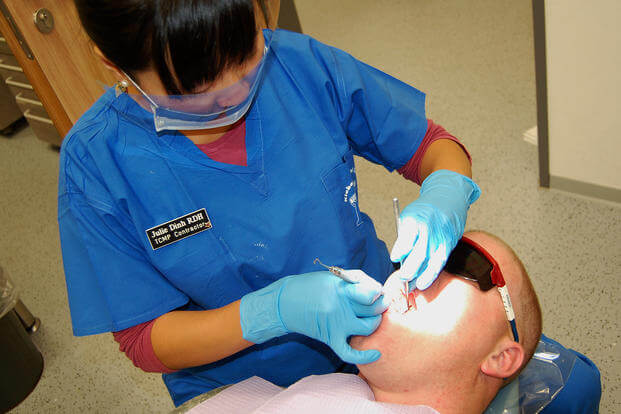When transitioning from active duty to retirement, there are 100 things to think about. And one of them is dental insurance. The military offers retiree dental coverage, but it isn't as obvious a choice as active duty family dental coverage.
Most active duty military families take advantage of the very inexpensive Tricare Dental coverage administered by MetLife. The Tricare Retiree Dental Program (TRDP) has significantly more expensive rates. When it is thrown in with all the other retirement-time decisions, it can be easy to sign up for TRDP without considering all the factors involved. Here’s a brief synopsis:
How Much Does TRDP Cost?
Rates are based upon family size and zip code. The 2016 rates range from:
- Single: $27.15 to $42.99 per month,
- Two Person: $54.41 to $84.60 per month, and
- Family (three or more persons) $95.95 to $148.85 per month
As you can see, TRDP is not inexpensive. which is why you must make a thoughtful decision about whether the coverage will benefit your family.
What Does TRDP Cover?
TRDP offers 100% coverage for diagnostic and preventative care, based upon their schedule of services, and emergency dental treatment. Additional care such as fillings, gum disease treatment, extractions and root canals are covered at either 60% or 80%. Major comprehensive services such as orthodontics, crowns and implants are covered at 50%, but are subject to a 12 month waiting period for new enrollees, with an exception for those who enroll within 4 months of retirement.
More importantly, you need to know that TRDP has a deductible of $50 per person, up to $150 per family, each year. It also has caps on coverage:
- $1,300 per person each year,
- $1,200 per person each year for emergency services due to an accident, and
- $1,750 per eligible person lifetime cap on orthodontic services.
When Can You Enroll?
All retirees are eligible to enroll in the TRDP at any time, and you can use it and not use it as fits your family’s needs. As mentioned above, there are two important things to remember about enrolling and disenrolling:
- there is a 12 month waiting period for major comprehensive services such as braces, crowns and implants, and
- new retirees have the waiting period waived if they enroll in TRDP within four months of leaving the military.
Should You Use TRDP?
Each family needs to do a cost-benefit analysis for their particular situation. Consider the following factors:
- whether you have other dental coverage available to you,
- your family size,
- your overall dental health,
- the ages of your children, and
- your financial capacity to save the premiums and self-insure for dental costs.
You have to balance the cost of the premiums, plus deductible, with the costs that you’re likely to incur, and then consider the yearly cap. For example, a single person paying $515.88 per year in premiums, plus a $50 deductible, may often spend less than that on an annual exam and two cleanings. Keep in mind that many dentists charge significantly less to patients who are self-funding their dental care, so your actual dental costs may be significantly lower than you anticipate.
A family with several young children might find that the premium costs are less than the costs of annual exams and cleanings plus the potential for emergencies or orthodontia. A person with a significant dental history may want to minimize their costs by using insurance.
Most retirees find that dental coverage offered by other employment (either the retired service member or the spouse) offers more affordable coverage than TRDP. If you have access to other dental insurance, compare prices and coverage to see which one is a better choice for you. In a very rare number of cases, you might even want to have both coverage, but that is going to be a small number of people.
My friend Doug has opted to forgo TRDP coverage and focus on great dental hygiene and regular preventative care. This option may be good for many retirees who don’t have a compelling reason to opt for insurance coverage.
Dental coverage is just one of the many decisions that you need to make during the separation process. These facts and considerations should help make your choice just a little easier.









